Sustainable Development
Community-Based Trophy Hunting Programs in Gilgit-Baltistan: A Sustainable Solution for Wildlife Conservation
Published
3 years agoon
By
Imran Ali
Wildlife Conservation Challenges in Gilgit-Baltistan
Gilgit-Baltistan, a mountainous region in northern Pakistan, is renowned for its awe-inspiring mountain landscapes and stunning natural beauty. The region is home to an array of wildlife, including the elusive Snow Leopard, the majestic Himalayan ibex, and the striking Markhor, among others. With this diverse range of flora and unique fauna, Gilgit-Baltistan is home to several rare and endangered animals, such as the Snow Leopard, the Asiatic Ibex, Marco Polo sheep, and Himalayan musk deer.
Despite the rich biodiversity and conservation value of the region, its wildlife faces several conservation challenges due to a variety of human activities, including poaching, habitat destruction, and climate change. In recent years, illegal hunting and habitat destruction have been rampant, posing significant threats to the region’s wildlife. However, through collaborative efforts and effective conservation measures, the region’s wildlife can be protected and preserved for future generations to appreciate and enjoy.
The Impact of Unregulated Hunting and Habitat Destruction
Unregulated hunting resulted in the brink of extinction of some species in certain villages of Gilgit-Baltistan. If you walk through the region today, it’s not uncommon to see the remains of this era of unregulated hunting. Most houses still have hunted animal heads and horns hanging on their walls. Poachers hunted these animals for their meat, hides, and other body parts, while communities destroyed their habitats for timber, agriculture, and settlements. The unrestrained hunting and habitat loss resulted in the decline of several wildlife populations, some of which were on the brink of extinction.

Community-Based Trophy Hunting Programs: A Solution to Conservation Challenges
The situation started to change when community-based trophy-hunting programs were introduced in the region. These programs incentivize local communities to conserve wildlife by providing them with direct financial benefits. This is because the revenue generated from hunting permits is invested back into the local community. The programs also help control the population of certain species, ensuring their long-term survival.
Pros of Community-Based Trophy Hunting
Conservation of wildlife: Trophy hunting programs incentivize local communities to conserve wildlife by providing them with direct financial benefits. The revenue generated from hunting permits is invested back into the local community. The programs also help control the population of certain species, ensuring their long-term survival.
Economic benefits: Trophy hunting programs bring significant economic benefits to local communities. The revenue generated from hunting permits provides a source of income for rural communities, which often lack access to employment opportunities. This helps reduce poverty and increase the standard of living for the people.
Empowerment of local communities: Community-based trophy hunting programs empower local communities by giving them control over the management of their natural resources. By participating in decision-making processes and benefiting from the revenue generated, local communities are motivated to protect their wildlife and maintain the health of their ecosystems.

Cons of Community-Based Trophy Hunting
The controversy surrounding ethics: The practice of trophy hunting is controversial, with some people believing it is unethical to kill wildlife for sport. This has led to a negative perception of community-based trophy-hunting programs, which can hinder their success.
Criticism from animal rights activists: Community-based trophy hunting programs have been criticized by animal rights activists, who argue that hunting for sport is cruel and should be banned. This has led to increased scrutiny of the programs and calls for them to be abolished.
Limited scope: Community-based trophy hunting programs are limited in scope and may only benefit a small number of communities. They may not be suitable for all regions and may not be the best solution for conserving all wildlife species.
Success Factors for Community-Based Trophy Hunting Programs
Gilgit-Baltistan’s community-based trophy hunting programs have come a long way since their inception, and their success is a result of several factors. For one, the local communities have been at the forefront of these programs and have taken ownership of them. They have recognized the value of conserving wildlife and have actively participated in the process. Additionally, the government has played a vital role in partnering with the local communities to implement and regulate the programs. This partnership has led to the development of effective policies and guidelines that govern the programs and ensure their long-term sustainability.
Furthermore, rigorous monitoring and evaluation of the programs have been the major factors in their success. This involves regular assessments of the impact of the programs on wildlife populations as well as the socioeconomic benefits that they provide to local communities. The information gathered through these evaluations is used to make data-driven decisions and adjust the programs as needed. In addition to monitoring the effectiveness of the programs, there is also a focus on building local capacity to ensure the long-term success of conservation efforts.
It includes training and educating local communities on sustainable practices and providing them with the resources they need to continue to implement these practices in the future. By involving local communities in the conservation process, the programs have been able to build strong relationships and create a sense of ownership over the protected areas. This, in turn, has led to greater cooperation and support for conservation efforts, ultimately leading to their success.
Examples of Successful Conservation Programs Around the World
Many success stories from around the globe demonstrate the effectiveness of conservation programs. For example, the African Parks Network has successfully restored and protected wildlife populations in several African countries, including Rwanda, Malawi, and Chad. The organization works in partnership with local communities to establish and manage national parks and reserves, which provide a safe habitat for threatened species such as elephants, lions, and gorillas.
Another success story is the reintroduction of the grey wolf to Yellowstone National Park in the United States. After being hunted to near extinction in the early 20th century, grey wolves were reintroduced to the park in 1995. Since then, the population has grown, and the wolves have had a positive impact on the ecosystem, helping to control the population of other animals such as elk and coyotes.

Conclusion
Conservation programs play a crucial role in protecting wildlife and preserving natural habitats. These programs require collaboration and support from governments, NGOs, and local communities to be successful. By implementing a combination of approaches such as habitat restoration, anti-poaching efforts, and sustainable tourism, conservation programs have the potential to make a significant positive impact on both the environment and the communities that depend on it. Continuous monitoring and evaluation of these programs are critical to ensure their success and make data-driven decisions that lead to long-term sustainability.

About Author
Imran Ali
The writer is the Founder & CEO of The Karakoram Magazine. Additionally, he is a nuclear scholar fellow at the Centre for Security Strategy and Policy Research (CSSPR) and can be reached at aleee.imran@gmail.com.
You may like
-


Rumi, the Moral Psychologist
-


Poor Winter Maintenance of KKH Risks CPEC All-Weather Trade
-
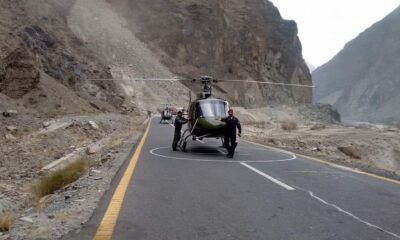

Pakistan Army Launches Rescue Operation, Missing Passengers in Deosai Found Safe
-


PM Shehbaz Sharif Visits Gilgit-Baltistan, Honors Martyrs, and Launches Development Projects
-
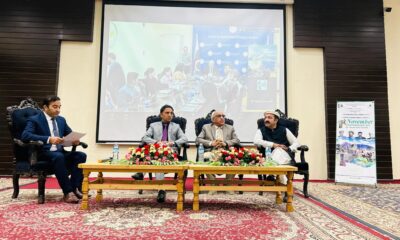

CISS-KIU Seminar: A Tribute to Gilgit-Baltistan’s Freedom Fighters of 1947
-


Gilgit-Baltistan Marks 77th Liberation Day from Dogra Rule
Sustainable Development
SUPARCO Inaugurates First Space Applications and Research Center in Gilgit-Baltistan
Published
1 year agoon
October 3, 2024By
Imran Ali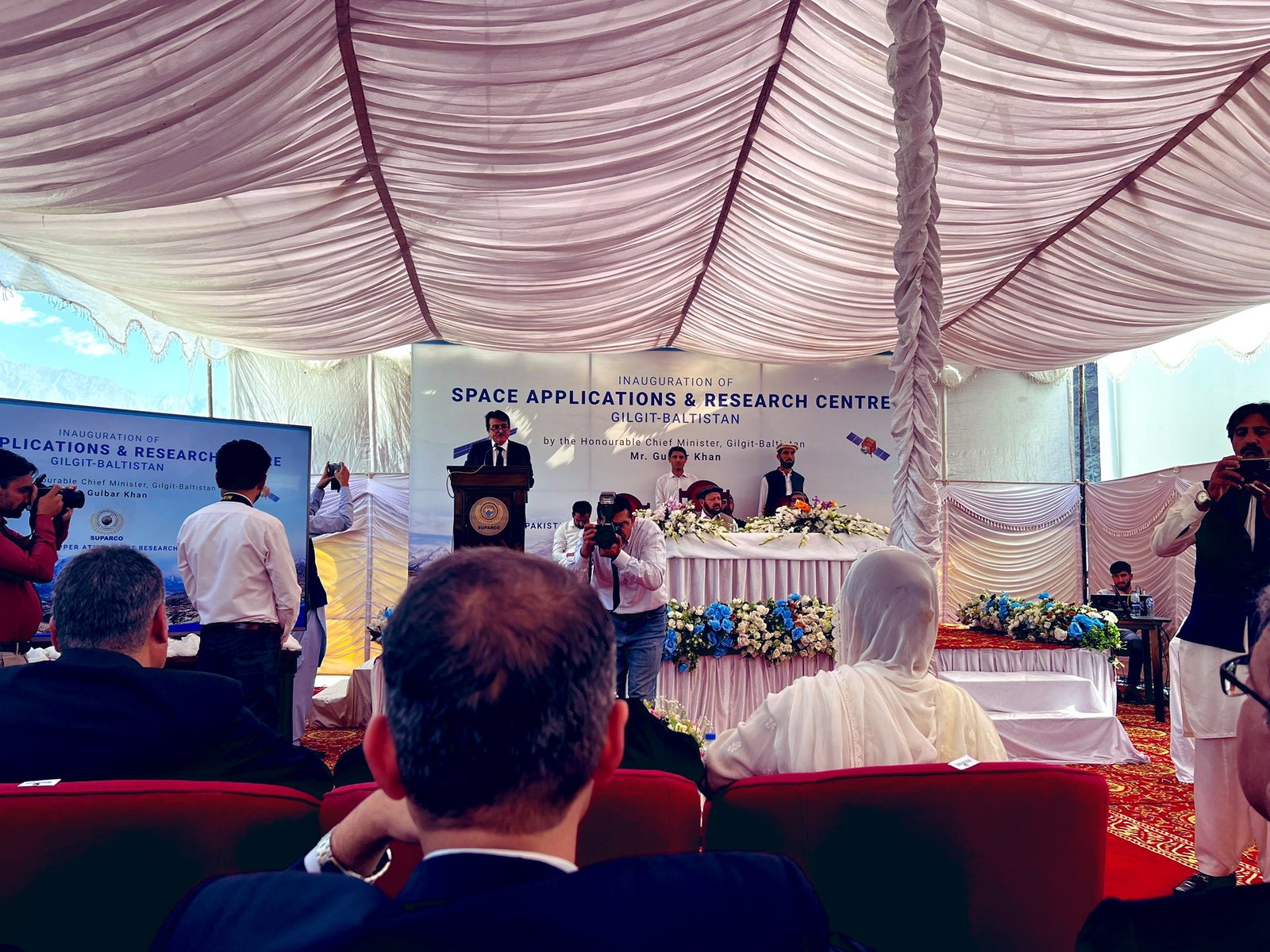
In a landmark achievement, Pakistan Space and Upper Atmosphere Research Commission (SUPARCO) successfully inaugurated the Space Applications and Research Center (SPARC-GB) in a ceremony held on Wednesday, 2 October.
Chief Minister of Gilgit-Baltistan, Haji Gulbar Khan, as the chief guest, celebrated the establishment of Pakistan’s first space research hub in Gilgit-Baltistan.
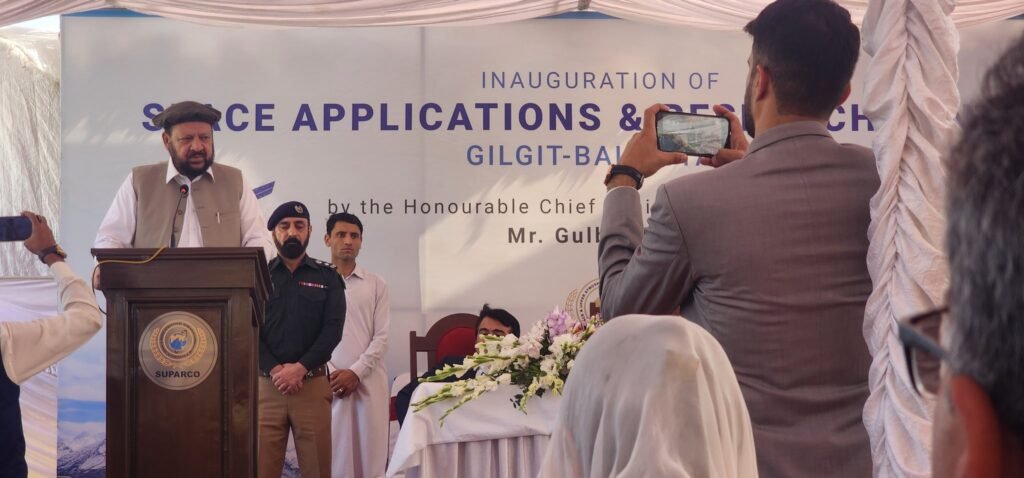
The opening of SPARC-GB marks a pivotal moment for the region, as it will play a crucial role in addressing environmental and socio-economic challenges.
The center will focus on critical issues such as climate change, glacier melt, and water resource management, positioning itself as a vital player in monitoring natural disasters and protecting biodiversity in Gilgit-Baltistan, said a news release received from SUPARCO.
In his welcome address, Chairman SUPARCO, Muhammad Yousuf Khan highlighted the establishment of SPARC-GB as a hub for cutting-edge research and innovation.
He emphasized that the center supports the local community through employment, capacity building, and development initiatives.
He also noted the region’s vulnerability to climate change and stressed the need for urgent action and enhanced local capacity.
The chairman underscored that with SPARC-GB’s operationalization, satellite-based monitoring capabilities will be further strengthened to address environmental challenges in the region.
Speaking on the occasion, Chief Minister of Gilgit-Baltistan, Haji Gulbar Khan acknowledged the significant step toward addressing the region’s pressing challenges.
He emphasized the critical issues Gilgit-Baltistan faces due to climate change such as glacier melting, which threatens water resources and communities.
He highlighted the region’s vulnerability to natural disaster like landslides, floods, and earthquakes requiring advanced monitoring systems.
The chief minister urged officials to integrate space technology and work closely with SUPARCO for regional development.
Attended by researchers, scientists, environmentalists, and students, the inauguration highlighted SPARC-GB’s mission to drive innovation and provide cutting-edge solutions to the region’s environmental challenges.
With its advanced space-based technology, the center is poised to deliver critical data on glacier monitoring, landslide risks, and unpredictable weather patterns, ensuring the resilience and safety of local communities.
In collaboration with the Government of Gilgit-Baltistan and international research organizations, SPARC-GB will provide technological assistance to address local challenges, including disaster management, ecological conservation and socio-economic development.
As part of SUPARCO’s Space Education and Awareness Drive, SPARC-GB is aimed at inspiring young minds, offering dynamic programs and research opportunities.
The center will serve as a beacon of scientific excellence, contributing to both local and global advancements in space technology.
About Author
Imran Ali
The writer is the Founder & CEO of The Karakoram Magazine. Additionally, he is a nuclear scholar fellow at the Centre for Security Strategy and Policy Research (CSSPR) and can be reached at aleee.imran@gmail.com.
Climate
Eco-Friendly Alternatives: Gilgit-Baltistan’s Green Business Development Initiative
Published
2 years agoon
May 25, 2024By
Imran Ali
Plastic waste has become a global crisis, and Pakistan is no exception. According to a report by the United Nations Development Programme (UNDP) Pakistan is among the top countries in the world that are most affected by plastic pollution. Pakistan has one of the highest percentages of mismanaged plastic in South Asia.
More than 3.3 million tons of plastic is wasted each year in Pakistan. In Gilgit-Baltistan, plastic waste is a significant problem, especially in the tourism industry, where a huge number of tourists visit every year and often leave behind plastic waste. Besides this, plastic waste occupies a major portion of solid waste in GB due to its wide use. This waste is openly dumped or burned for heating purposes, especially in winter which is responsible for emissions of obnoxious gases, posing a threat to vegetation, human and animal health, and the environment as a whole. Gilgit city is grappling with a significant environmental and financial burden due to the excessive use of single-use plastic shopping bags. Every year, the city consumes an alarming 11 tons of these bags, costing an estimated 60 million rupees.
On a per-kilogram basis, these bags cost anywhere between 450 to 500 rupees, adding up to a staggering 4.95 million rupees in monthly consumption alone. Annually, the cost of these bags is a staggering 59.4 million rupees, which is roughly 60 million rupees.
But the financial burden is just the tip of the iceberg. The environmental cost of these bags is even more staggering. Approximately 20.46 million tons of these bags are discarded into the environment, causing severe damage to the ecosystem.
The ultimate fate of this huge chunk of plastic waste is “Bukhari” traditional heating stoves or open dumps in water channels, streets and open fields.
It’s time for us to come together and make a change by reducing the use of these harmful single-use plastic bags in Gilgit city and opting for more eco-friendly alternatives for a sustainable future.
The Role of EPA
But there is hope. Gilgit-Baltistan Environmental Protection Agency (EPA) in collaboration with Line departments, NGOs, Communities, and the private sector has taken a step forward to eliminate single-use plastic from the region under the project named “Phasing out Plastic Bags in Gilgit-Baltistan through Promotion of Smart Shopping Bags” by introducing the Green Businesses Development initiative. The aim of the project is to preserve the natural environment of GB by phasing-out polythene bags and by promoting local entrepreneurs to promote cloth, paper and other eco-friendly bags. In this regard, the ban on single-use plastic shopping bags has been implemented in Gilgit city from 1st January 2023. To maximize the social and environmental benefits of the project interventions, “Green Businesses” would be incubated by supporting existing entrepreneurs by providing interest-free loans. The initiative, which is currently in the implementation stage, aims to provide interest-free loans of up to PKR 96 million to local enterprises that will work to make Eco-friendly bags i.e., cloth, paper, and nonwoven bags. This initiative is not only a response to the plastic waste problem but also a response to the challenges posed by climate change in Gilgit-Baltistan.
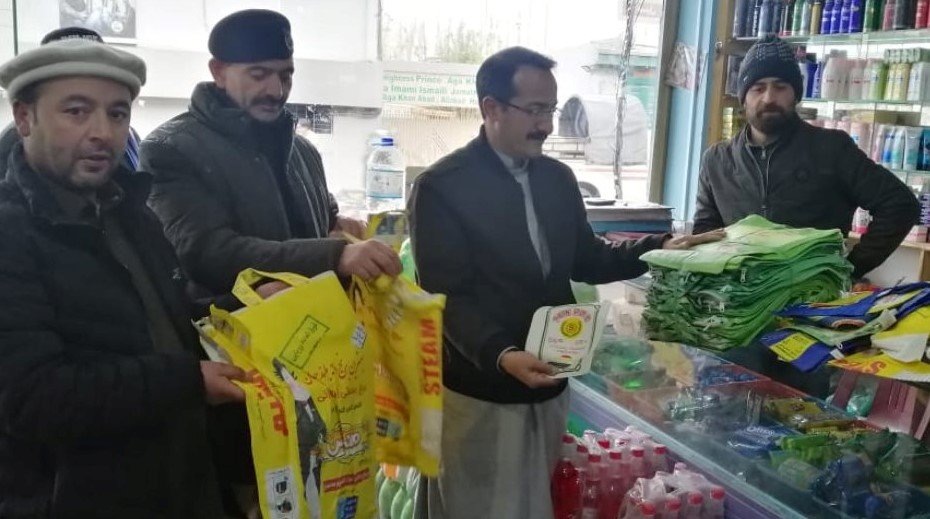
The Green Businesses initiative is a major step forward in the fight against plastic waste in Gilgit-Baltistan. Once the loan initiative is implemented, the local enterprises will be required to use eco-friendly materials, and also have to comply with the regulations set by GB-EPA in terms of waste management, energy consumption, and emissions. Furthermore, the initiative will also provide training to the enterprises for the implementation of circular economy principles and to promote sustainable production methods.

Say No to Single-Use Plastics: Switch to Reusable Alternatives
Plastic bags made from petroleum or natural gas are a major contributor to pollution and take hundreds of years to degrade. Non-woven bags, also known as reusable bags, are a sustainable alternative that are biodegradable, compostable, and made from recyclable materials like polypropylene. It is evident from the studies that non-woven bags consume less energy and materials and releases fewer greenhouse gases (GHG) than other types of shopping bags. Reusable plastics, like water bottles and food storage containers, have a lower impact on the environment than disposable plastics when used responsibly and recycled properly. To minimize the environmental impact of plastics, it’s important to reduce single-use plastics and promote reusable alternatives, as well as education on proper disposal and recycling.
A Circular Economy Approach Towards a Sustainable Gilgit-Baltistan
The use of plastic in Gilgit-Baltistan was almost non-existent before the 1990s. Instead, locals relied on traditional materials such as cloth or willow bags. Implementing a plastic ban in the region would have numerous benefits, both economically and environmentally. It would support local businesses by promoting the use of locally-made alternatives such as cloth or paper bags and encourage a circular economy. Additionally, it would save the region an estimated 60 million rupees that would otherwise be spent on importing plastic. The environmental benefits would also be substantial. With an average of .5 million tourists visiting Gilgit-Baltistan each year, if each visitor were to use just three plastic bags, that would amount to 1.5 million plastic bags ending up in the environment. By implementing a plastic ban and promoting eco-friendly alternatives, the local economy would be supported and the region would become more attractive to tourists. The Gilgit-Baltistan Environmental Protection Agency (EPA) is also taking steps to hold multinational companies accountable for plastic pollution and require them to give back to this initiative through Corporate Social Responsibility.
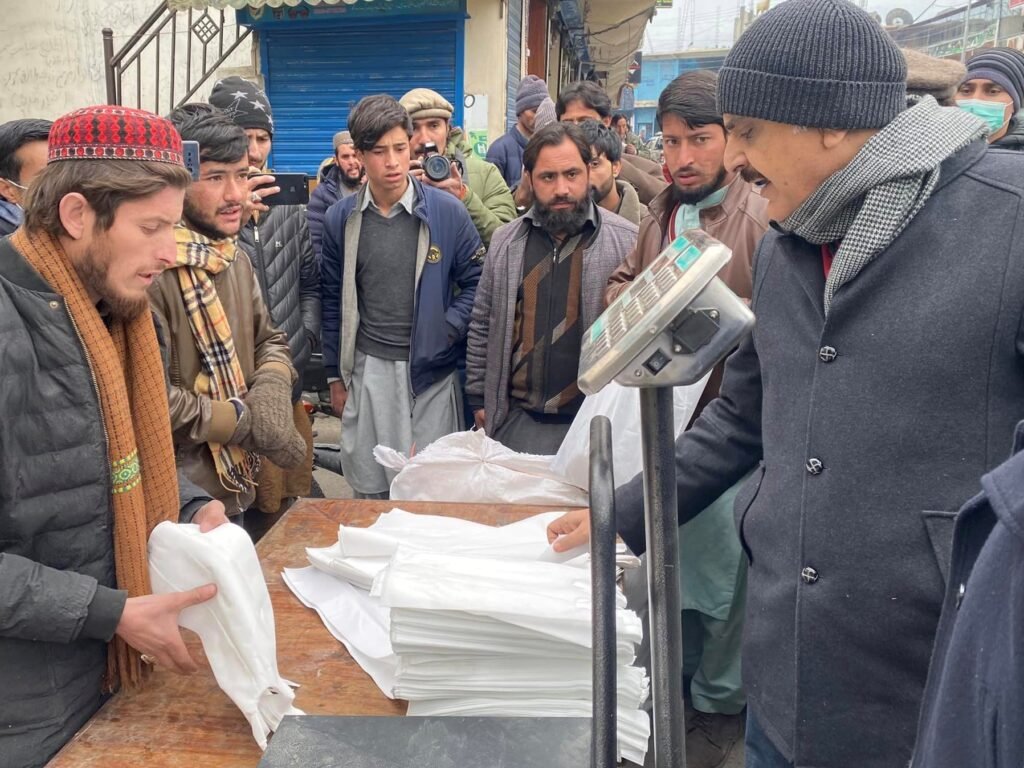
This initiative can prove to boost the concept of a circular economy within an otherwise unsustainable environment. Supported by the fact that the region of Gilgit-Baltistan does not encompass any manufacturing of plastic products, the amount of plastic found within the region is unreasonable. This concept of circular economy can prove to be beneficial for employment purposes across the region through the adoption of sustainable and environment friendly alternatives.
Furthermore, Gilgit-Baltistan receives more than its residential capacity of tourists within the span of a few months each year, thus bringing in a whole new hoard of plastic bags adding to the already humongous numbers. If sustainable solutions are adapted across the region, this issue can be fixed, however, for this to happen the Plastic Ban has to be implemented rigorously.
The circular economy approach promotes reusable materials, closing the loop on the use and disposal of plastic products. This model has been successful in many countries such as France, where a law was passed in 2016 that ban disposable plastic plates, cups, and cutlery. It also put into place an extended producer responsibility, obligating manufacturers to finance the collection and recycling of their products.
Conclusion
But the fight against plastic waste is not just the responsibility of local businesses. Each and every one of us has a role to play. By choosing to use reusable water bottles, shopping bags, and containers, we can reduce our own plastic waste. Supporting local businesses that use eco-friendly alternative options is also a great way to make a difference. By working together, we can build a cleaner and more sustainable future for Gilgit-Baltistan.
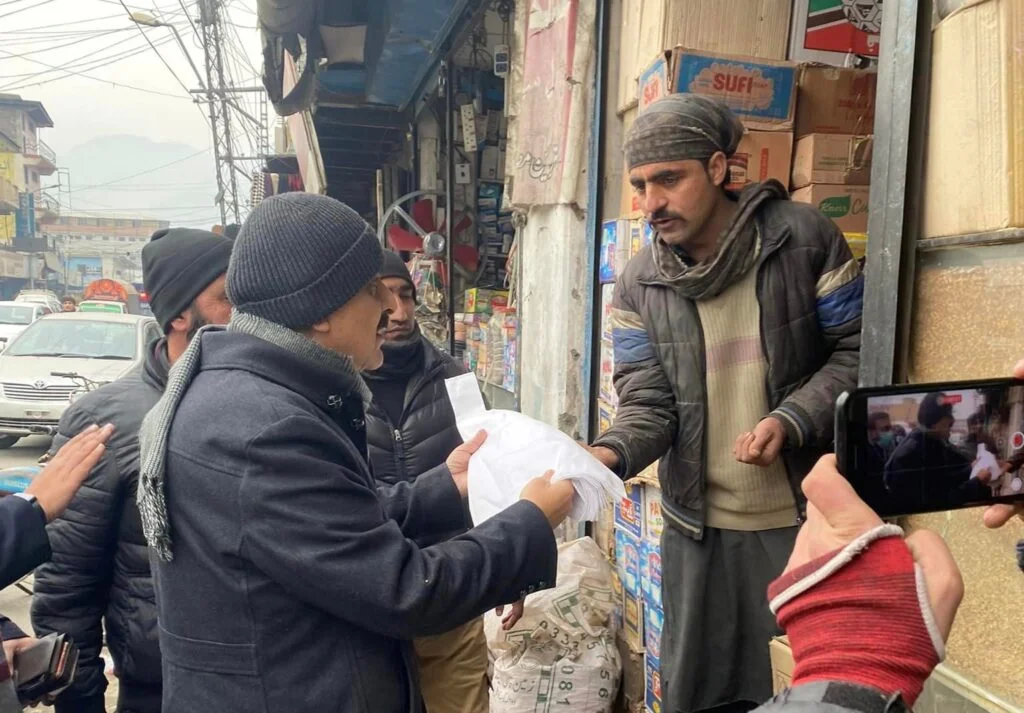
The Green Businesses initiative is an important step towards addressing the plastic waste complexity in Gilgit-Baltistan and addressing the challenges posed by climate change in the region. The initiative is currently in the implementation stage, and with the support of local businesses and the community, it has the potential to make a significant impact on reducing plastic waste and promoting sustainable practices. It’s important to keep in mind that this initiative is not a one-time solution, but a continuous effort that requires the participation and commitment of all sectors of society. With this initiative in place, we can work towards a greener and more sustainable Gilgit-Baltistan.
About Author
Imran Ali
The writer is the Founder & CEO of The Karakoram Magazine. Additionally, he is a nuclear scholar fellow at the Centre for Security Strategy and Policy Research (CSSPR) and can be reached at aleee.imran@gmail.com.
Opinion
Development Planning in Gilgit-Baltistan – The Missing Link {A reflection}
Published
2 years agoon
September 5, 2023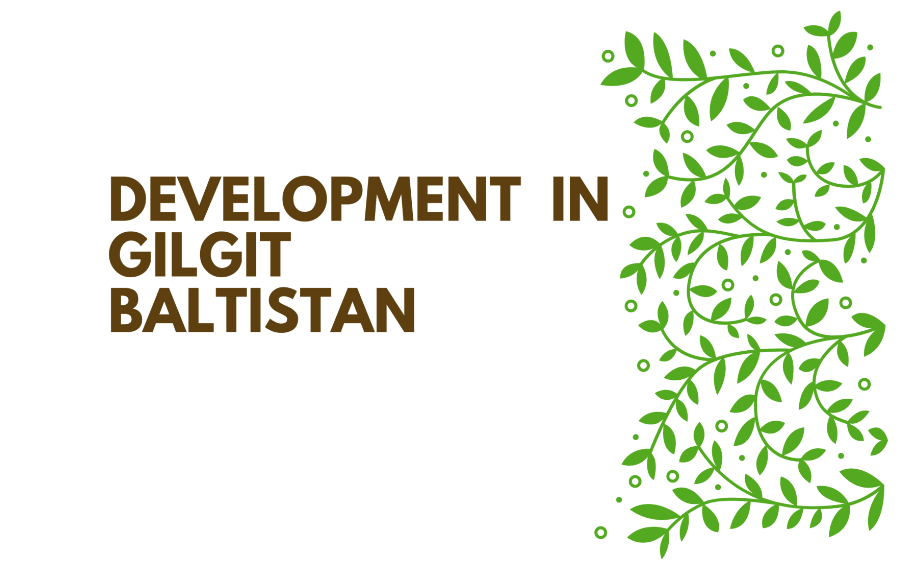
Mr. Sajjad Hyder, Chief Economist, Planning & Development department has recently retired from his service after serving almost three decades, commencing from April 1993 to November 30, 2022. He, as Chief Economist, was responsible for leading public Investment management policies for designing and implementing various socioeconomic development projects and programs in the region. Moreover, concoction of substantive policies for socioeconomic development in all sections was also part of his job responsibilities.
The retired officer, Mr. Sajjad Hyder, has shared the following reflection, regarding public investment management in GB, which is based on his 30 years of exposure as a development planning practitioner:
Development Planning in Gilgit-Baltistan – Missing Link
Historical background: The development economics was born immediately after the second world war with the birth of the Breton Woods international financial system to facilitate development and eradicate poverty in the countries that were emerging out of colonialism. The Planning commission Pakistan was formally established in 1953 with the Harvard Advisory Group (HAG) officially became its coach soon after. Based on their methodology, the country introduced formal 5-year planning in 1955 which with periodic interregnums continues until today. In Gilgit-Baltistan, development planning starts with the inception of 2nd Five Year plan by establishing a Planning Cell in 1971.
It is not out of place here to say that most of the project cycle management components in GB have fallen into misuse, while others have developed serious defects. Following are the major gaps, in my observation over last 30 years with the department:
REASONS OF INEFFICIENCY IN DEVELOPMENT PLANNING IN GILGIT-BALTISTAN:
As indicated earlier, Public Investment Management in Gilgit Baltistan starts from 2nd five-year plan. This system served well the needs of this region in
early stages as the planning & development department was an empowered organization headed by a development commissioner in BS 20. Over time, however, the system developed several problems due to degradation of the organization in view of successive political developments in the region. Presently, Gilgit-Baltistan’s PIM system (development planning) is mere shadow of the concept given by the Harvard Advisory Group, meaning, in capacity, influence and effectiveness.
To understand the sources of inefficiency, it is necessary to review all the stages in the public investment process to identifying gaps and weak points in the processes and procedures.
Guidance and Screening: Identification and screening components of PIM are badly compromised due to atrophy of economic planning in Gilgit-Baltistan. Three broad factors were mainly responsible for the waning performance of the PIM system in GB:
1) Rigidities of the PIM system: The structure of the economy changed from a public sector led to a private sector led economy. This structural changed called for a different role of the planning system, in general, and particularly, the role of P&DD. This required different skills and competencies than what are available with the department. 2) Dominance of crisis management over economic management: As projects started to slow down due to economic policy and planning adopted in firefighting mode. Longer term planning as well as public investment became casualties of the crisis mode which has preoccupied the GB Government for the last several years.
3) A sharp decline in the capacity of the PIM system in GB: With no medium-term plan or strategy available to define the sectoral and sub-sectoral priorities of the government, the project identification process became largely ad-hoc, with identified projects reflecting more the priorities of political leadership than those established through a well thought out plan. The void left by abandonment of the planning process is largely filled by the politicians, where a large number of projects are identified by politicians, or by the line-departments on directives of the politicians.
Ironically, the Planning Commission manual, provides ample guidance for identification, appraisal, and implementation of various programs / projects but of no use in GB.
Project Preparation and Appraisal: In the beginning, the quality of project preparation and appraisal was quite satisfactory. However, over time, these functions weakened, mainly due to following reasons:
- With mounting fiscal difficulties, the line departments faced an increasing
squeeze on their operational (recurrent) budget. Inclusion of a project into
the ADP therefore became a mode of getting additional fiscal resources
for the line departments, from which it can finance some of operational
needs left unmet by inadequate recurrent budget. There was therefore a
big enough incentive for the line departments to get as many as possible
projects into the ADP as soon as possible. This forced them to cut
corners on project preparation and pull all strings and levers to get project
approved. {Roughly, only 3 percent of development expenditure goes to create or acquire physical assets, whereas 31 percent is spent on operation expenditure}. - Political intervention in the development process increased adversely
affecting the quality of project preparation and the moral of
development-related staff in the departments and P&DD. There never has been any tradition in GB of undertaking ex ante or ex-post independent reviews of the preparation and appraisal process even for important projects. - “Games” in the project preparations and approval processes: Limited capacity of the P&DD to properly appraise projects has given rise to some “gaming” behavior within the line departments to get whatever they want from the project approving authorities by deliberately include unwanted expenditure items (e.g. a large number of vehicles) in the project design just to distract the P&DD’s appraisal team to focus on these items, leading to a less than required focus on other areas and costs of the project. {The end result is leading to implementation delays, changes in scope and design of the project, cost overruns and consequently loss in benefits from the projects}.
- Project Selection and Budgeting: Once a project is included in ADP in principle, administrative and political wheels start moving to get the project approved, irrespective of whether funds for the project are available or not, and it is technically viable or otherwise. This leads to a number of projects making into the ADP with insufficient (at time a “token” allocation). This allocation is usually not even enough to pay for the
salaries of the project staff. Moreover, this also leads to thin spreading
of resources across other projects. As such, many projects get under-financed, which causes implementation delays, and a large throw-forward. A large throw-forward leaves little room for the incoming new government to implement its development agenda with full vigor. This has created a number of implementation issues undermining the efficiency of public investment.
Project Implementation: Project Implementation has been a weak area in GB. For ADP projects, shortcomings in project identification, preparation, appraisal, and approval processes make implementation very difficult. In addition, projects are usually managed by staff taken form regular cadres of government, with limited project management skills.
At times project management is assigned as an “additional responsibility” along with the person’s normal work. Moreover, procedures governing project financing, procurement and contracting are overly cumbersome. Hence, implementation delays and the consequent cost escalations are a norm rather than an exception for ADP.
Public Procurements: Weak procurement practices remain one of the major reasons for inefficiencies in public expenditure, including public investments as procurement is a highly technical subject. In addition, the volume of public procurements is huge, both in size and number. There are not enough skilled procurement specialists within the GB Government to manage all these procurements. Moreover, weak accountability and defective bidding and contract documents have given rise to corrupt contracting procedures and practices which directly undermine the efficiency of public expenditure in general, and particularly public investment.
Monitoring & Evaluation: Despite being a function mandated to both the line departments and the P&DD, project monitoring requires considerable improvements. To date, most of monitoring that is undertaken relates to inputs and compliance with procedures and processes, output and impact monitoring continues to be considered as outside the purview and mandate.
Project Completion and Service Delivery: Although procedures for completing a project and soliciting operational resources are well laid out, yet they are hardly ever followed. Project completion report (PC-IV) is filed only in cases where the project requires recurrent expenditure allocation to be operational. Following are the reasons for inadequate allocation of operational budget to a newly completed project:
i) Weak estimates of operational resources: While preparing the PC-I, the line
departments deliberately understate the recurrent expenditure implications of
the project. This is done to improve the chances of getting the project
approved and included in the development budget. The finance authority
takes these estimates very seriously when making operational allocation after
completion of the project.
ii) Implementation delays not only lead to escalation in project cost, but also in recurrent expenditure required to make the project operational.
iii) Inadequacy of R&M allocations lead to deterioration in quality of service
delivered by the projects, reducing value for money under projects.
Missing Links in Functioning of Planning & Development Department: P&DD GB has thus become a project approval body where most of the projects are not identified based on technical considerations or as part of a shared approach to maximizing growth and welfare. These developments adversely impacted the value for money under development.
At all stages of the project, P&DD is supposed to keep track of performance. However, this tracking is now not happening to maximize project performance. At the project initiation, the PC1 form requires a full cost-benefit and economic analysis of the project to be presented to the approving bodies, after scrutiny by the sections.
When the project is complete the sponsoring agency must send a completion report, the PC4. Seldom is this report completed and hence there is little evaluation of the work done and its proper costing. After 5 years of the completion of the project, an evaluation report, PC5, reports on the performance of the project comparing it to the stated expectations set out in the PC1. Once again, these reports are seldom if ever completed. Altogether, role of P&DD is to approve projects and maintaining expenditure management afterwards.
Too Many Projects, Too Little Return
The technical details of policy and projects such as basis of evidence, cost-benefit,
rates of return and rigorous feasibility or sensitivity analysis have gradually been
withdrawn from senior policymaking forums. Looking strictly at the project
development and management system, several weaknesses have crept into the system, lowering their impact and rate of return.
These are:
1) Projects are approved without due diligence. Feasibilities, cost-benefit analysis, spatial determination, and several other details are often subject to political or other considerations. Approvals are pushed through with executive fiat.
2) Projects frequently have large cost overruns. Using a selection of ADP projects overruns are frequent and quite large. This is a combination of poor project management, infrequent delays leading to cost escalation as well as poor initial preparation.
3) Excessive focus on brick and mortar. The bulk of the investment is in hard infrastructure such and link roads are the biggest components. Even in the social sectors and other sectors, departments are interested in brick and mortar and even the approval process favors that.
(To be continued by highlighting proposals for improvement)
Mr. Sajjad Hyder joined P&DD, as Research Officer (BS-17), in 1993 and worked in all the sectors of economy, undertaking research studies and region’s policy development initiatives for socioeconomic development. Main research studies include: Northern Areas Strategy for Sustainable Development, in collaboration with IUC Pakistan, Norther Ares Report on Participatory Poverty Assessment in collaboration with planning commission Pakistan, and Gilgit Baltistan Economic Report {Broadening the Transformation}, a joint venture with ADB and world bank. His contribution in major project interventions include Pakistan Social Action Program, under which significant impact was seen in primary education, primary health care and rural water supply and sanitation in this region. Altogether, Mr. Sajjad Hyder, as young officer {that time}, had acted a leading role in SAP interventions as a catalyst.
In the years ahead, Mr. Sajjad Hyder, was elevated to the positions of Assistant Chief (BS-18), Deputy Chief (BS -19), and Chief Economist (BS-20), having commendable contribution (s) in the socioeconomic development of Gilgit=Baltistan.
About Author
Sajjad Hayder
The writer was the Chief Economist, Planning and Development Department, Government of Gilgit-Baltistan, who recently retired from his service after serving almost three decades. He, as Chief Economist, was responsible for leading public investment management policies for designing and implementing various socioeconomic development projects and programs in the region.

Muhammad Azeem Khan: Pakistan’s Number One Amateur Featherweight MMA Fighter

A Drop for a Click: The Silent Cost of Our Digital Thirst

10 Places to Visit in Hunza – Stunning Natural Wonders You Can’t Miss
Latest
-

 Tourism3 years ago
Tourism3 years ago15 Best Places to Visit in Skardu
-

 Arts, Culture & Heritage2 years ago
Arts, Culture & Heritage2 years agoTraditional women’s dresses of Gilgit-Baltistan
-

 Tourism3 years ago
Tourism3 years agoThe Ultimate Travel Guide to Gilgit-Baltistan: Land of the Mighty Mountains
-

 KIU Corner2 years ago
KIU Corner2 years agoA Guide to LMS KIU Student Login – KIU
-
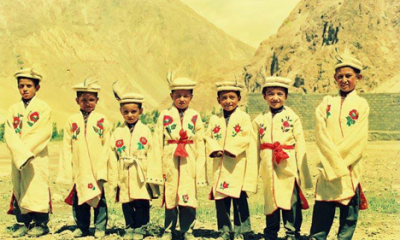
 Arts, Culture & Heritage2 years ago
Arts, Culture & Heritage2 years agoShuqa Simple but amazing winter clothing of Gilgit-Baltistan
-

 KIU Corner2 years ago
KIU Corner2 years agoEmbracing Challenges: Gul Rukhsar’s Remarkable Journey
-

 Opinion3 years ago
Opinion3 years agoThe Constitution of Pakistan: 50 Years of History, Significance, and Challenges
-

 Arts, Culture & Heritage3 years ago
Arts, Culture & Heritage3 years agoQuroot: A Nutritious and Flavorful Staple of Gilgit-Baltistan’s Cuisine


